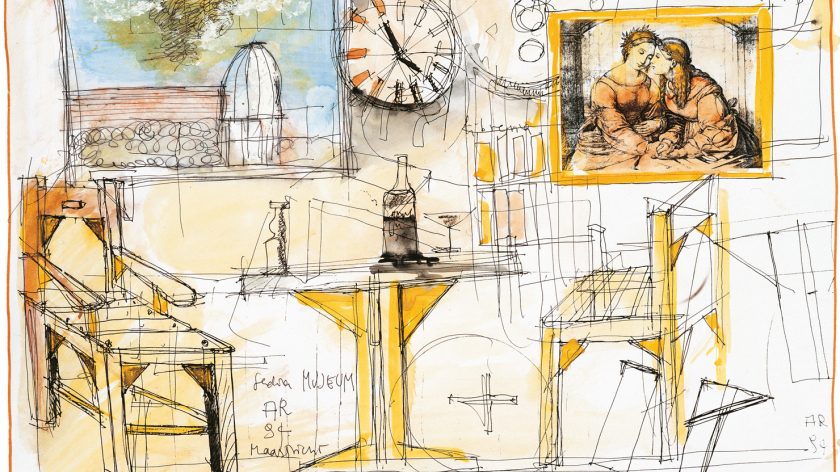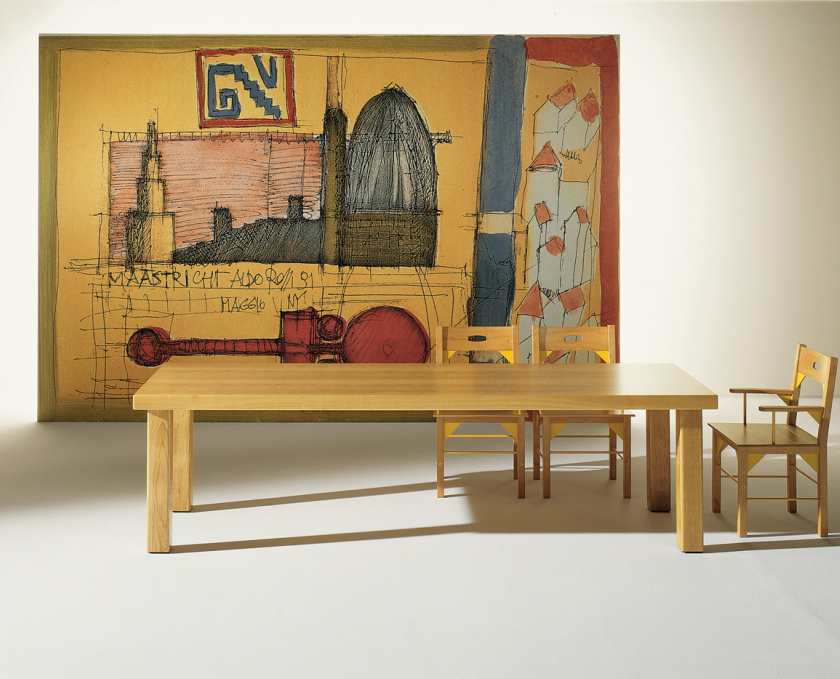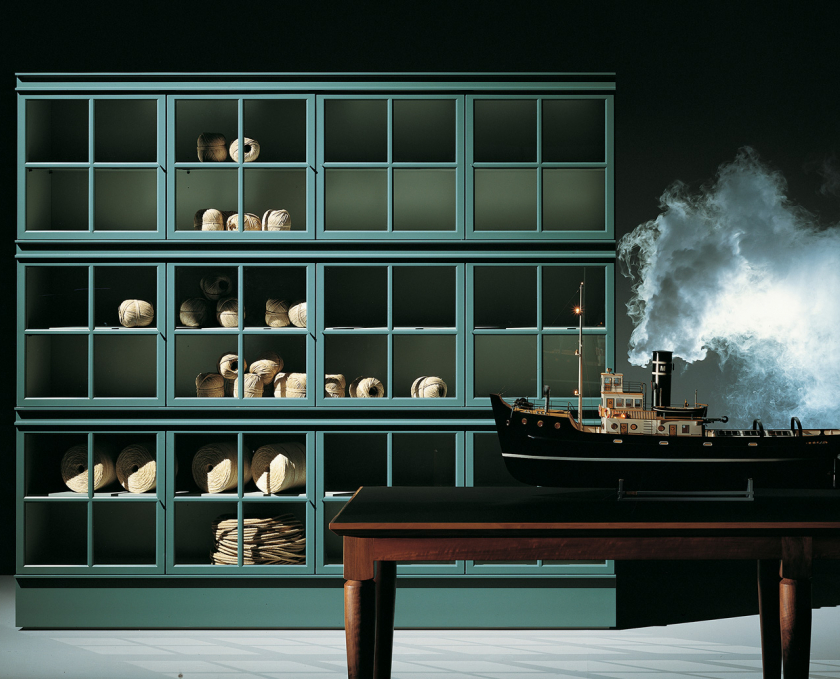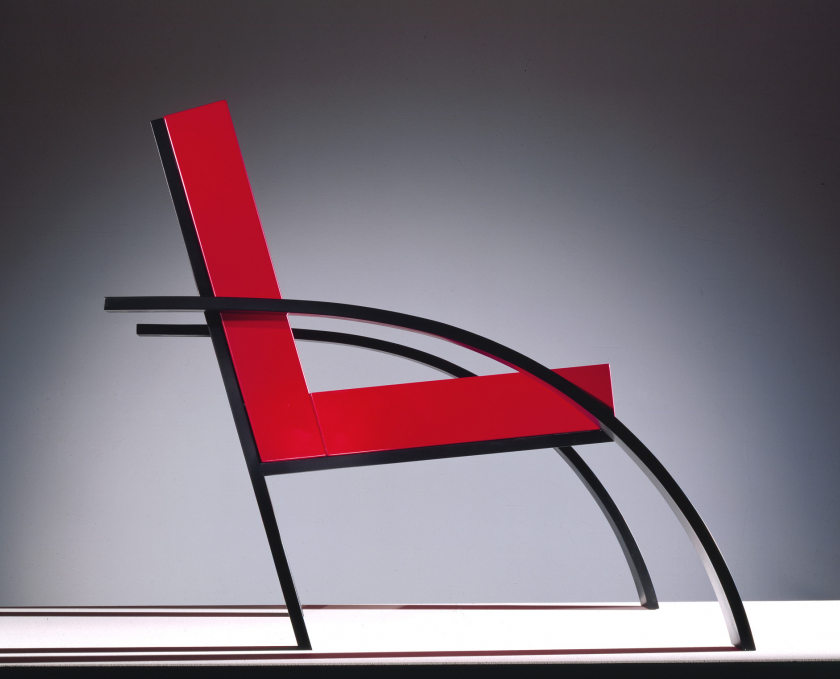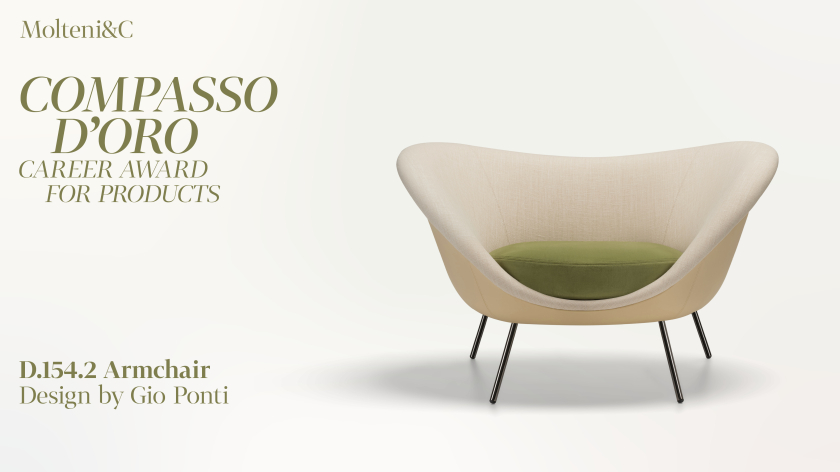Aldo Rossi and the Molteni Group
1980, the Milan Salone del Mobile: in the Molteni stand there is a curious object, a sort of beach hut, named Cabina dell’Elba and defined as a wardrobe. It was designed by Aldo Rossi, probably the Italian architect best known on the international scene and the most controversial in Italy. Thus began the twenty-year cooperation between the companies of the Molteni Group and the great maestro, brought to Giussano by his friend Luca Meda, then art director at Molteni&C.
Within the space of some 20 years Rossi designed items of furniture for Molteni&C and UniFor that became part of the history of design. Among others, the neoclassical Teatro chair (1982), later to become a small armchair and divan, designed with Luca Meda. The Milano chair (1987), simple and almost deliberately basic, but precisely proportioned, over the years it became the company’s symbol.
A tall bureau, with a sliding door, Carteggio(1987), which achieved great success. “A presence in the room, a character, an allusion to bygone rites such as writing letters, and keeping them in special little drawers“ wrote Vanni Pasca on that subject.
Then came Piroscafo (1991), with Luca Meda, a modular and adaptable glass system. Conceived as a reference to a precise structure, the Fontivegge Centre in Perugia designed by Rossi himself (1982-89). “Piroscafo looks at the world of architecture, removes the figures of the buildings from their landscapes and takes them into a world of rooms and interiors”, wrote Daniele Vitale in the presentation catalogue.
For UniFor, the highly functional Parigi chair (1989), which met the demands of office spaces, interpreted by Rossi as a domestic space in which to work. Then the furniture for Maastricht’s Bonnefanten Museum (1990-95), Cartesio, Consiglio, the Museo chair, reproduced recently by Unifor. Lastly the big Contract projects, such as rebuilding the Teatro della Fenice in Venice (1996- 2003).


